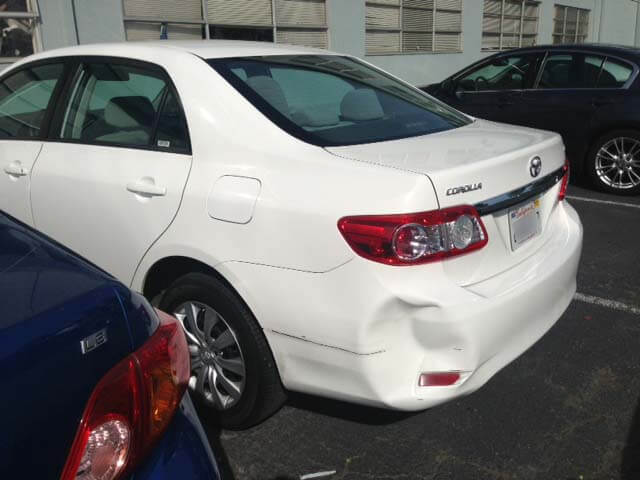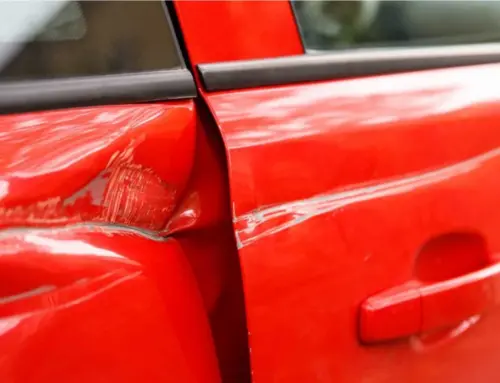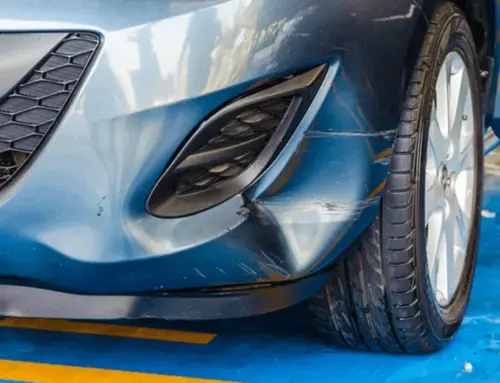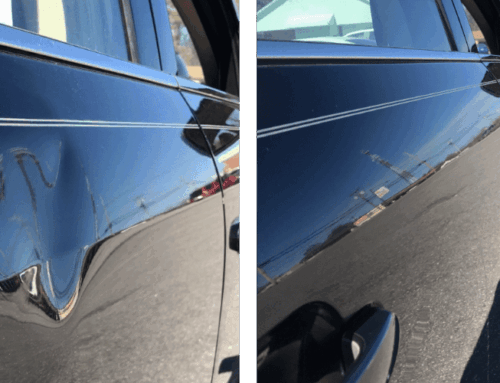Got a dent in your car? You don’t need to put up with it. Mobile dent repair makes fixing those annoying bumps easier than ever. With today’s tech, experts use a combination of heat, pressure, and special tools to smooth out dents right on the spot.
No need to take your car to a shop and wait for days. This method is fast, precise, and affordable—often restoring your car to its original shine. Whether it’s a small ding or a bigger dent, modern techniques bring your vehicle back to life without the hassle.
How do modern techniques in mobile dent repair work?
Modern techniques in mobile dent repair primarily involve methods like Paintless Dent Repair (PDR), which focuses on restoring the original shape of the car’s metal without affecting the paint.
Technicians use specialized tools to access the backside of the dent and carefully massage the metal back into place. This is often done using a combination of leverage, gentle tapping, and applying heat to make the metal more malleable, allowing for smooth reshaping.
The process is highly precise, with technicians carefully working the dent to its original form. PDR is particularly effective for minor dents and dings caused by hail, door impacts, or parking lot accidents.
Since the original paint isn’t disturbed, the repair is often quicker, less expensive, and more environmentally friendly than traditional methods, which may involve sanding, priming, and repainting. Mobile dent repair is convenient as it can be done at the customer’s location, saving time and eliminating the need for a trip to a body shop.
What materials and tools are used in mobile dent repair?
Mobile dent repair uses specialized materials and tools to remove dents and restore a vehicle’s appearance. Some of the key materials and tools include:
- PDR (Paintless Dent Repair) Tools: The most essential tools for mobile dent repair are those designed specifically for PDR. These include:
- Dent Rods/Leverage Tools: Used to push or pull the metal from behind the dent gently.
- Tap Down Tools: Small hammers gently tap and smooth out high spots after the dent has been pushed out.
- Glue Pulling Kits are used for larger dents with limited access behind the panel. A specialized adhesive is applied to the dent, and a pulling tool is attached to the glue to pull the dent out slowly.
- Heat Sources: Mobile dent repair often requires the application of heat to make the metal more malleable. Heat guns or infrared lamps are commonly used to soften the metal, which makes the repair process more effective and less likely to damage the paint.
- Reflector Boards and LED Lights: These are used to identify the exact shape of the dent. These tools help technicians spot small imperfections and guide them in reshaping the metal accurately.
- Cleaners and Solvents: These prepare the surface, clean the affected area, and remove any adhesive left behind after glue pulling.
These tools and materials allow technicians to efficiently repair dents while preserving the vehicle’s original paint and finish, making it a quick and cost-effective solution for minor to moderate damage.
How does temperature affect the mobile dent repair process?
Temperature plays a crucial role in mobile dent repair, especially when using techniques like Paintless Dent Repair (PDR). Here’s how it affects the process:
- Metal Malleability: Heat is often applied to the affected area during mobile dent repair to make the metal more pliable. When the metal is warmed, it becomes easier to manipulate and reshape. This is especially important in PDR, where technicians must push or pull the dent without causing the metal to crack or break. Without the right temperature, the metal can be too stiff to work with effectively, making the repair process more challenging.
- Paint Integrity: Temperature also influences the paint’s behavior during the repair. If the metal gets too hot, it could damage the paint or cause it to bubble. Conversely, cold temperatures can make the metal more brittle, which increases the risk of cracking or causing additional damage during the repair. A controlled, moderate temperature ensures that the metal can be reshaped without harming the paint, allowing for a clean, effective repair.
- Adhesive Application: In glue-pulling techniques, temperature also affects the adhesive used to pull out large dents. The glue needs to be applied at the right temperature to bond properly. Too much heat can cause the adhesive to set too quickly, while too little heat may make it ineffective, leading to a poor result.
Controlling the temperature during mobile dent repair ensures that the metal remains malleable, the paint stays intact, and the adhesive performs optimally, leading to a smooth and successful repair.
What are the advantages of paintless dent repair compared to traditional methods?
Paintless Dent Repair (PDR) offers several advantages over traditional dent repair methods, making it a preferred choice for many car owners. Here are the key benefits:
- Preserves Original Paint: Unlike traditional methods, which often require sanding, filling, and repainting, PDR preserves the vehicle’s original paint. Since the dent is reshaped without disturbing the paint, the car retains its factory finish, which is valuable for maintaining its resale value.
- Faster Process: PDR is typically much quicker than traditional dent repair, which can take days or weeks, depending on the extent of the damage. PDR can often be completed in just a few hours, allowing the car owner to return to the road much faster.
- Cost-Effective: PDR doesn’t involve the cost of repainting, sanding, or using filler materials; it’s usually more affordable than traditional dent repair methods. The simplicity and speed of the process lead to lower labor and material costs.
- Environmentally Friendly: Traditional repair methods often use chemicals, paint, and other materials that can harm the environment. PDR is more eco-friendly since it doesn’t require painting or toxic materials.
- Maintains Vehicle Value: Preserving the original paint and avoiding the need for repainting helps maintain the car’s value. Traditional repairs may lower the vehicle’s resale price due to mismatched paint or visible signs of previous work.
- Minimal Disruption: PDR is a less intrusive process that doesn’t involve removing panels or parts of the vehicle. This reduces the risk of causing additional damage during the repair.
PDR is a faster, more affordable, and environmentally friendly option that preserves the integrity of the vehicle’s paint and value, making it a highly efficient alternative to traditional dent repair methods.
Restore Your Car’s Beauty with Modern Dent Repair Services
Discover modern techniques for restoring your car’s beauty today with us here at Piedmont Dent Repair. Our expert mobile dent repair services use cutting-edge methods like Paintless Dent Repair (PDR) to restore your vehicle’s original appearance quickly and efficiently. We specialize in removing dents, dings, and creases without costly repainting, preserving your car’s value.
With our convenient mobile service, we come to you, saving you time and hassle. Contact us today, and let us bring your car’s beauty back to life with modern dent repair techniques!





